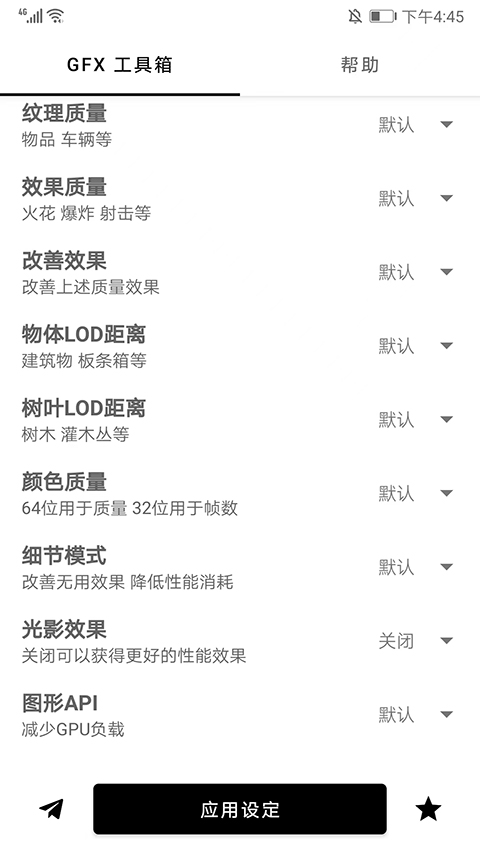gfx画质工具箱120帧最新版本汉化版(gfx tool)是专为和平精英和吃鸡玩家打造的超高清画质修改软件,可以帮你修改游戏画质,让你可以更好的体验游戏乐趣,软件功能强大,使用简单,有需要的用户赶快来下载体验吧!
gfx画质助手官网介绍gfx画质修改器最新版是一款专为和平精英游戏打造的画质修改工具,这款辅助工具解锁HD画质,修改手机型号限制,自由切换极限帧数,可以一键修改画面质量,而且一点都不卡,请放心使用!

1、一键获取SG优化代码,支持自定义。
2、免root权限,傻瓜式操作一键开启。
3、一键解锁极限帧率,全部画质选项。
4、简约、 轻巧、 干净、易用。
gfx画质修改器功能适应改变:
软件会根据手机的性能来自动提高游戏的画质,让游戏能在画质和性能平衡的状态下运行。
免除打扰:
通过GFX画质修改器进入游戏后,可以屏蔽掉短信电话这些消息,防止游戏的时候被打扰。
免费使用:
这款软件功能强大,但是不用用户花一分钱就可以直接使用了,而且相当的好用的。
操作简便:
软件操作起来相当的简便的,玩家们第一次使用就完全可以上手了,没有任何难度。
一键修改:
用户可以一键修改游戏中的画质,让玩家可以在一个更好的画质中游戏。
没有广告:
软件中没有任何的广告的,也不用担心一不小心点击了广告了,用户使用起来轻便。
更新日志v10.1.7更新内容:
功能改进
bug修复